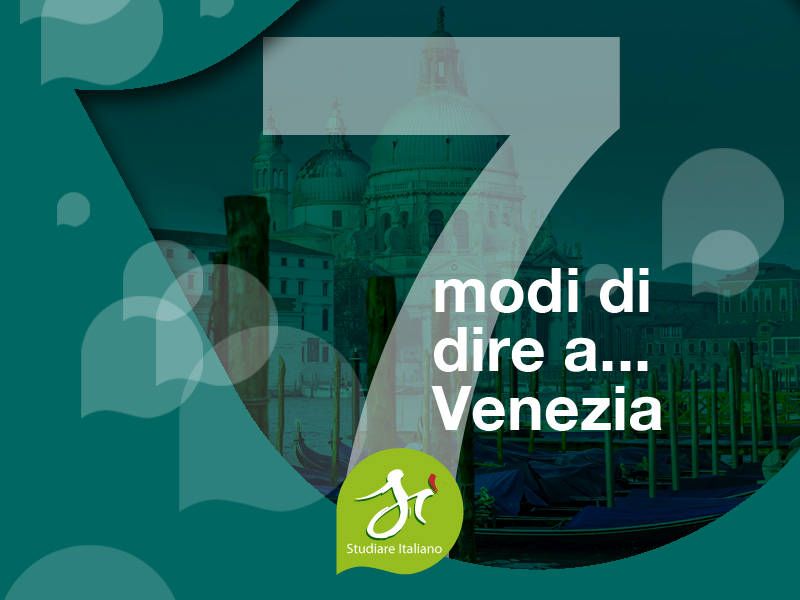For over a thousand years, Venice has been a dream before being a geographical place. A unique place to study Italian, a place that has managed to keep the charm of centuries intact. Thanks to an immense cultural heritage, Venice is a city visited by people from all over the world who are fascinated by the romantic atmosphere, by the art treasures, by the unicum represented by a labyrinth of canals, bridges, calli, reflections, marble palaces, churches, lights that always change and always seem to reinvent the city, with its sudden openings, soft horizons, colors that generations of painters have studied and tried to reproduce. A dream indeed.
1 – There are no cars, buses, or streetcars typical of a large metropolitan city
What makes Venice so special and unique is the atmosphere that this city offers daily to those who live there and those who choose it as a tourist destination. The first thing you notice when you arrive is the slowness that distinguishes it. There are no cars or streetcars typical of a metropolitan city: you move around on foot or by boat, and as a result, each person is induced to socialize and meet. Walking around Venice, you will have a thousand opportunities to speak Italian with the locals. The rhythm of the steps reconnects with the deep and ancient core of this city, with its breath. In the canals, the regular sound of the oars plunging into the water tells of an ancient relationship with nature made of toil, of silence. It is a rhythm that Venice protects with its rowing societies that involve thousands of citizens and that have in the Vogalonga in May and the Regata Storica in September the two salient moments of visibility and testimony.
2 – City very open to other cultures
Since the time of the Serenissima, Venice has always been a city very open to other cultures: the Arsenal, a large enclosed area where the ships – the pride and fortune of Venice – were built, a veritable industrial complex studied and admired all over the world (to the point that Dante Alighieri himself spoke of it in his ‘Divine Comedy’) offered work to many Dalmatians, Greeks, Germans, and Armenians, and Venice never shied away from welcoming Jews and Turks, and Arabs even when clashes of civilizations and religious wars were expanding in Europe. One of its famous citizens, Marco Polo, carried the curiosity of the Venetians and their vocation for trade to the Far East, reaching the Khan’s court in China and giving literature and history the fabulous book of travel memoirs The Million.
3 – Rowing ”alla veneta,” that is, standing, with one or two oars, looking ahead
Since the only connection with the mainland is the Ponte della Libertà bridge, completed in the first half of the 20th century, it was inevitable to use boats and to row ‘alla veneta,” standing with one or two oars and looking forward. This is an ancient way of rowing and has been immortalized in paintings from Carpaccio to Longhi to Canaletto. Also, Italian language students in Venice can experience this “art of rowing” and enroll in a rowing school. And, for a modest price, learn this very ancient and very fun technique. Taking an Italian language course in Venice will allow you to discover the secret of Venice, the one that escapes the simple passing tourist!
4 – The immortal charm of the grand canal
Those who do not feel like trying their hand at this sport, can easily take a ride in a gondola, along the Grand Canal, an actual open-air exhibition of the Venetian splendor, full of Byzantine, Gothic, and Renaissance palaces, and get lost in the maze of canals where the magic of silence, especially in the evening, will give you totally unexpected emotions.
5 – The Venetian lagoon
Venice and its lagoon are one. You should not miss the opportunity to visit the most famous ones, including Murano (the island of glass) or Burano (the island of lace and bright colors), Torcello (with its very ancient Cathedral), and the first settlement of Venetians at the time of the barbarian invasions, or the lesser-known islands of Certosa and Sant’Erasmo. Here you will discover the gardens of Venice where large quantities of fruits and vegetables (and recently also wine) are produced, including the famous and delicious violet artichoke of Sant’Erasmo. These are opportunities not to be missed by those who want to study Italian in Venice and enjoy this less known but no less fascinating aspect of Venice. Easily reached by public transportation, these islands are home to treasures of art and nature, excellent restaurants where you can take advantage of organic products grown by local companies, and fresh fish, particularly abundant in these areas. Among the islands much loved by international visitors is the island of San Michele, home of the city cemetery, where famous artists, poets musicians have been buried, a pilgrimage destination for many fans!

6 – The Lido
A separate discourse deserves the long strip of land that separates the Venetian lagoon from the sea, namely the Venice Lido, with its beaches made famous by Thomas Mann. A holiday resort, the so-called ‘green island’ for its long tree-lined boulevards and lush gardens, home to the International Film Festival, the worldly, social event organized by the Biennale in September.
7 – The Venice biennale
But what is the Biennale? This state-run body organizes the major exhibitions Biennale Arte Biennale Architettura, Biennale Danza Biennale Musica Biennale Teatro and, indeed, Biennale Cinema, bringing to Venice the best of international contemporary production in its areas of expertise. The Biennale is an unmissable occasion, a symptom of a cultural vivacity that, not only looks at the preservation of the past, but looks at the horizon of the contemporary to the point of imagining the future. One more reason to choose Venice for your Italian language and culture course!
8 – Local handicraft
In Venice, local craftsmanship is also a source of attraction and curiosity for those who come to study in Italy. The famous textiles of Rubelli, Jesurum, and Fortuny are synonymous with quality and elegance in the world, as are the glassware produced in Murano by the skilled hands of artisans who, in the furnaces, blow true magic of transparency and elegance using ancient and secret methods. Still today, many artisans labor with leather, paper, and gold leaf. Many mosaicists, marble workers, and wood carvers still produce objects of exquisite quality and rare beauty, representing a centuries-old tradition of skill and quality.
9 – Venice and art
Venice and art is a difficult chapter to tackle in a few lines… The heritage is genuinely inexhaustible. Paintings, sculptures architectures are everywhere. Venice is full of museums and family-collections where one can meet names such as Tintoretto, Bellini, Giorgione, Tiepolo, and a thousand others. Along the canals, visitors can enjoy architecture by Codussi, Longhena Palladio, and unknown masters of earlier periods. St. Mark’s Square by itself is a World Heritage site and a place where endless quantities of works and artifacts are collected. In this place, a student of art or Italian will find the opportunity to immerse himself in another time dimension, like a journey through time. The Basilica, the Doge’s Palace, the Procuratie Vecchie, the Marciana Library, the Correr Museum… In a relatively small space, you can admire a concentration of civilization, art, and culture that has no equal in the world.
10 – Night life
Venice is also a lively city frequented by young people. With its two major universities, Ca’ Foscari and Architettura (IUAV), bringing thousands of students from all over Italy and the world to Venice, the city offers an enjoyable and dynamic nightlife, concentrated in the areas of Campo Santa Margherita, Rialto, and Cannaregio. Dozens of clubs where you can find yourself, meet new people, spend pleasant hours outdoors as if in a large living room under the stars, drinking a spritz and eating the typical Venetian ”cicchetti,” small canapés elegantly prepared with fish or vegetable products. Open until late at night, these clubs or ”bacari” allow our students studying Italian in Venice to practice the language with locals or other students coming from all over the world. Students who attend not only at the two universities but who attend courses at the Benedetto Marcello Conservatory of Music or the Academy of Fine Arts or the theater courses at the Teatro Goldoni or Teatro l’Avogaria.
Venice is a city for everyone, younger or older, lovers of art, culture, food, and beauty. A town that has jealously preserved a serene atmosphere. A place sparkling with stimuli and suggestions, where to get lost, as in one of the many stories or movies written or filmed here. A town that is one of the most desired and dreamed places in the world!

